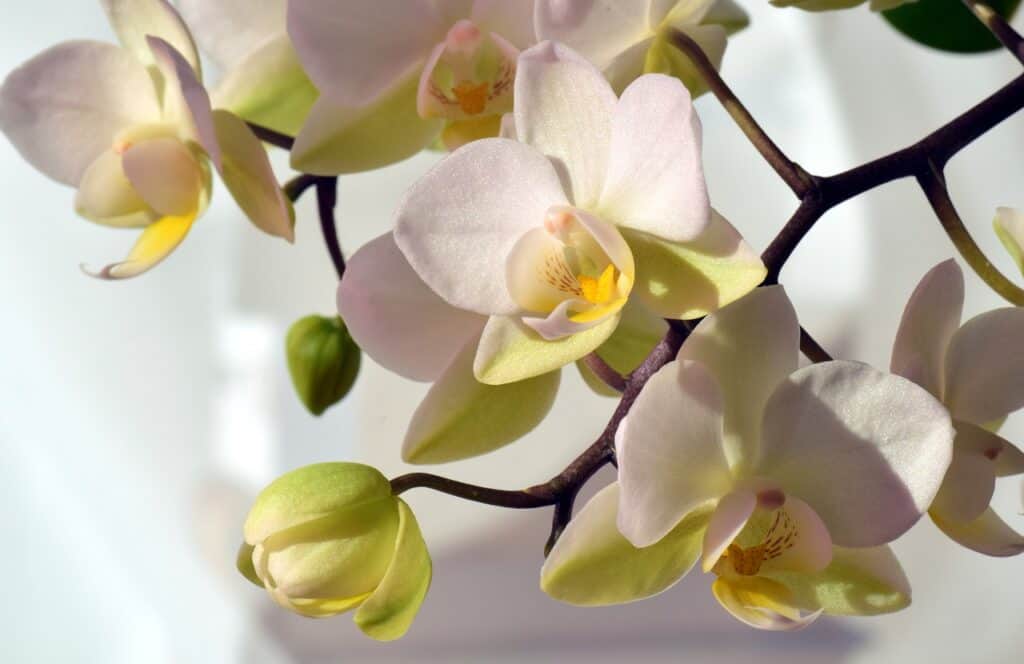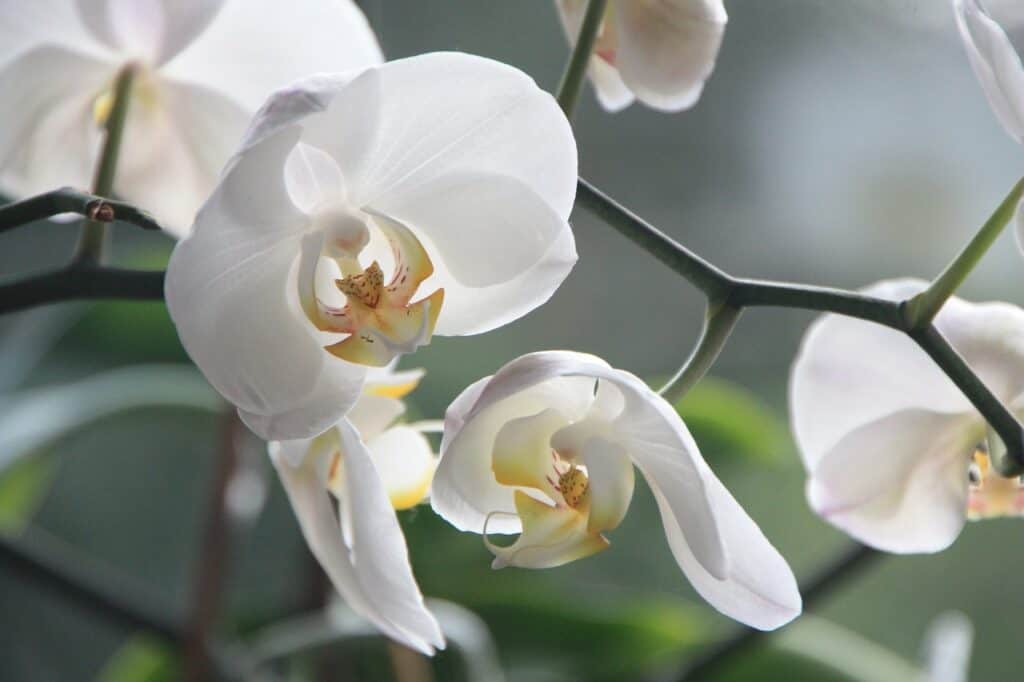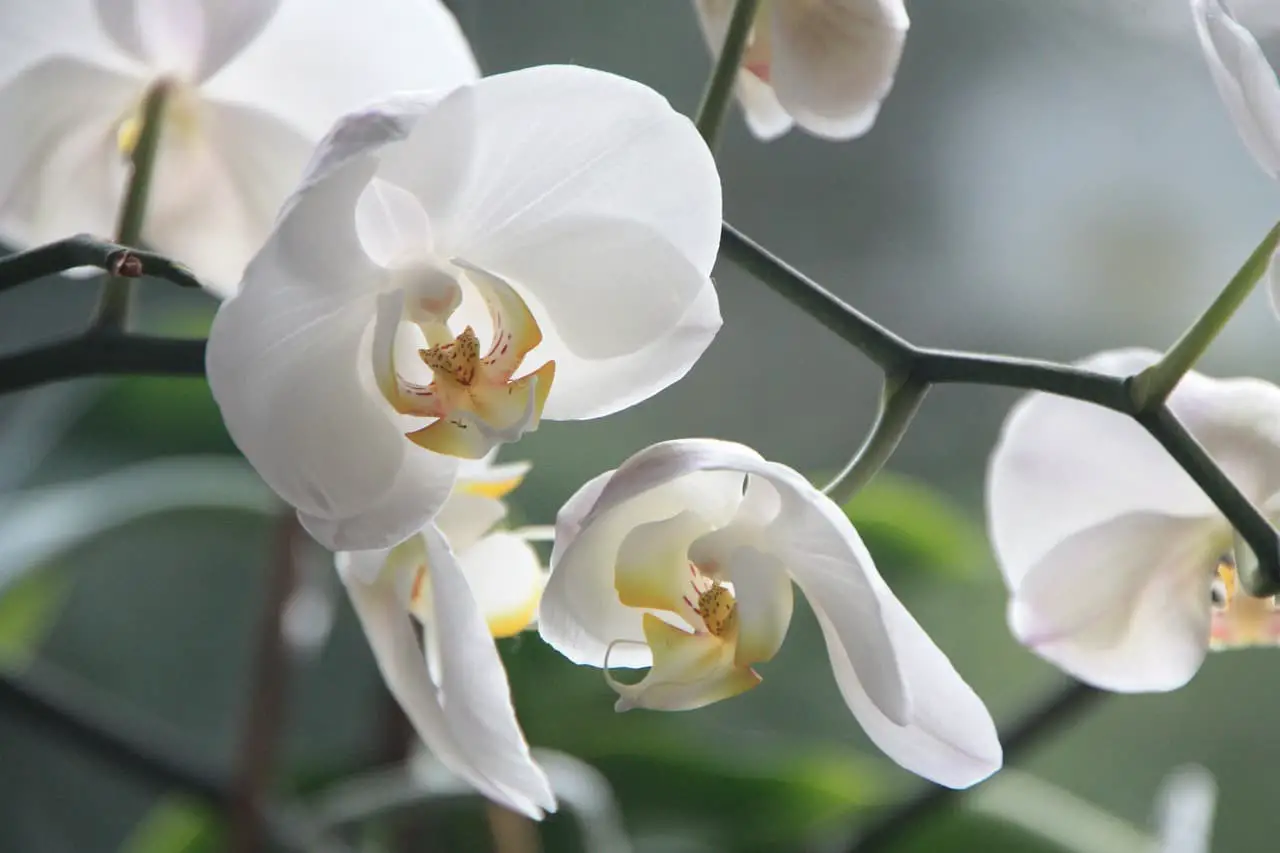Orchids are beautiful and exotic flowers that come in a variety of colors and shapes. They are a popular houseplant due to their unique characteristics and low maintenance. However, when orchid leaves start turning yellow, it can be a cause for concern. In this article, we will examine the common causes of yellowing orchid leaves and provide practical tips on how to fix the problem.

Identifying the Cause of Yellowing Orchid Leaves
Orchids require specific care to survive and thrive. The wrong balance of temperature, light, moisture, and nutrients can cause issues like yellowing leaves. One of the most common causes of yellowing appears to be water-related, such as overwatering or underwatering. Improper sunlight can cause yellowing as well, including too much or not enough. Given these variables, it’s essential to give your orchids the right conditions for healthy growth.
Common Reasons for Yellowing Leaves
There are multiple reasons why your orchid leaves might be turning yellow; some of the most common include:
– Overwatering: Overwatering is the most common reason why orchid leaves turn yellow. When plants receive too much water, it causes the root system to rot and decay, leading to yellowing leaves.
– Underwatering: Orchids can also suffer from underwatering, which leads to dry leaves and potential yellowing. Booze can be seen when the orchid dries out, resulting in yellowing leaves.
– Fungal Infection: Another common cause of yellowing is a fungal infection, usually seen as small black spots on the leaves, which can grow quickly if left untreated.
– Pests: Like other plants, orchids are susceptible to pests, such as spider mites and mealybugs. These pests consume the plant’s juices, leading to yellowing and even death.
Taking Action to Fix Yellowing Orchid Leaves
The first step in reviving an orchid with yellowing leaves is to examine the plant’s overall health. Remove misplaced leaves, any dead or rotting material, and any dead roots. This process can be very intensive, but it keeps the plant healthy.
Use a sharp pair of scissors or clippers and remove only the affected areas of the plant, making sure there is no infected or rotting material left behind. Prune any dead or rotting roots, but never prune healthy areas.
Treating Orchid Fungal Infections and Pests
When dealing with a fungal infection, it is best to remove the affected leaves entirely. Next, you can spray the remaining leaves with a fungicide to prevent the condition from spreading.
For pest control, you can use insecticidal soaps or neem oil, both effective ways to get rid of pests without harming the plant. Make sure to follow the manufacturer’s instructions to prevent damage to the plant.

Preventing Future Problems and Boosting Orchid Health
A crucial aspect of orchid care is proper nutrition. Orchids require nutrients like nitrogen, phosphorous, and potassium to grow, and without proper nutrition, they won’t thrive. To provide the right nutrients, use a liquid fertilizer that’s specifically designed for orchids, following the package instructions carefully.
Best Practices for Orchid Watering and Sunlight
To prevent yellowing in orchid leaves, it’s crucial to provide the right amount of water and sunlight.
– Watering: Orchids need a delicate balancing act between extreme dryness and overhydration. Ensure you use the right container and soil to prevent water from becoming stagnant, which can lead to fungus and rotting roots. Watering once a week is often enough, and be sure never to let the potting medium dry out entirely.
– Sunlight: Orchids are sensitive to sunlight, and too much or too little can cause yellowing leaves. Orchids prefer bright but indirect light. Place them in a north or east-facing window or use a shading device to cut down the light intensity.
Conclusion
Orchids are fascinating plants, but they require specific care and attention to stay healthy. If your orchid leaves start turning yellow, it’s a sign that something isn’t right. Luckily, by following the tips outlined in this blog, you can diagnose the problem and take action to fix the issue. Remember to take the time to care for your orchids, provide them with the right conditions, water them correctly, and they will reward you with years of flowering beauty.

